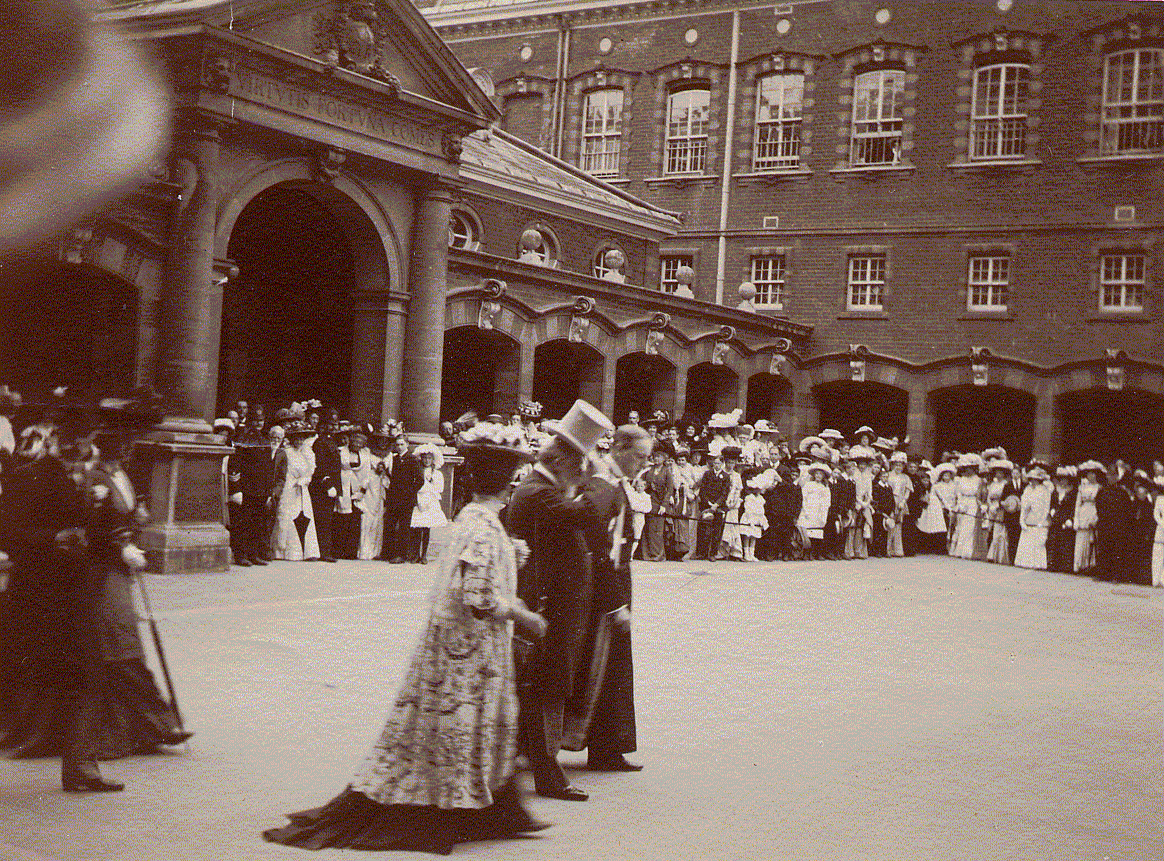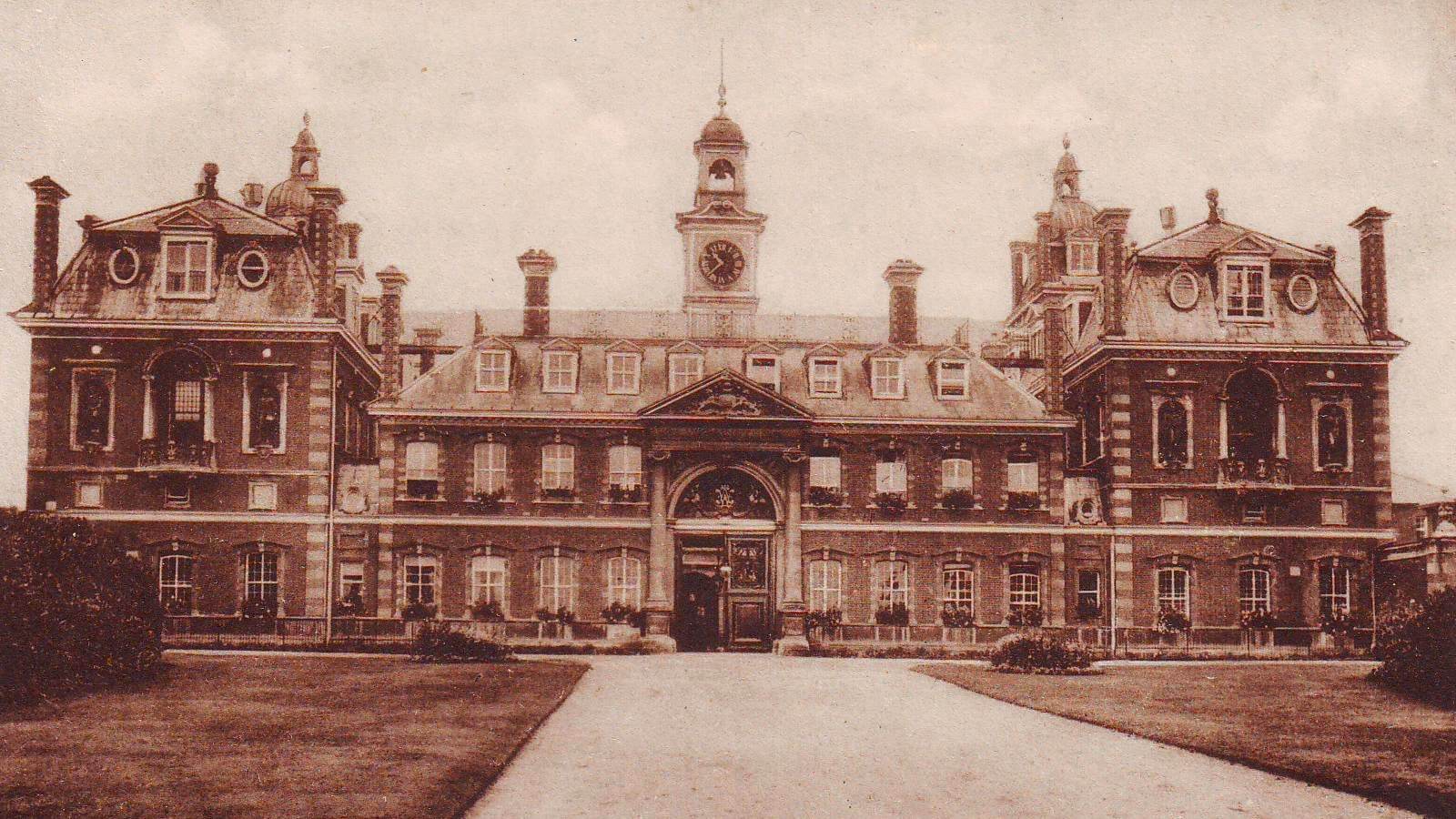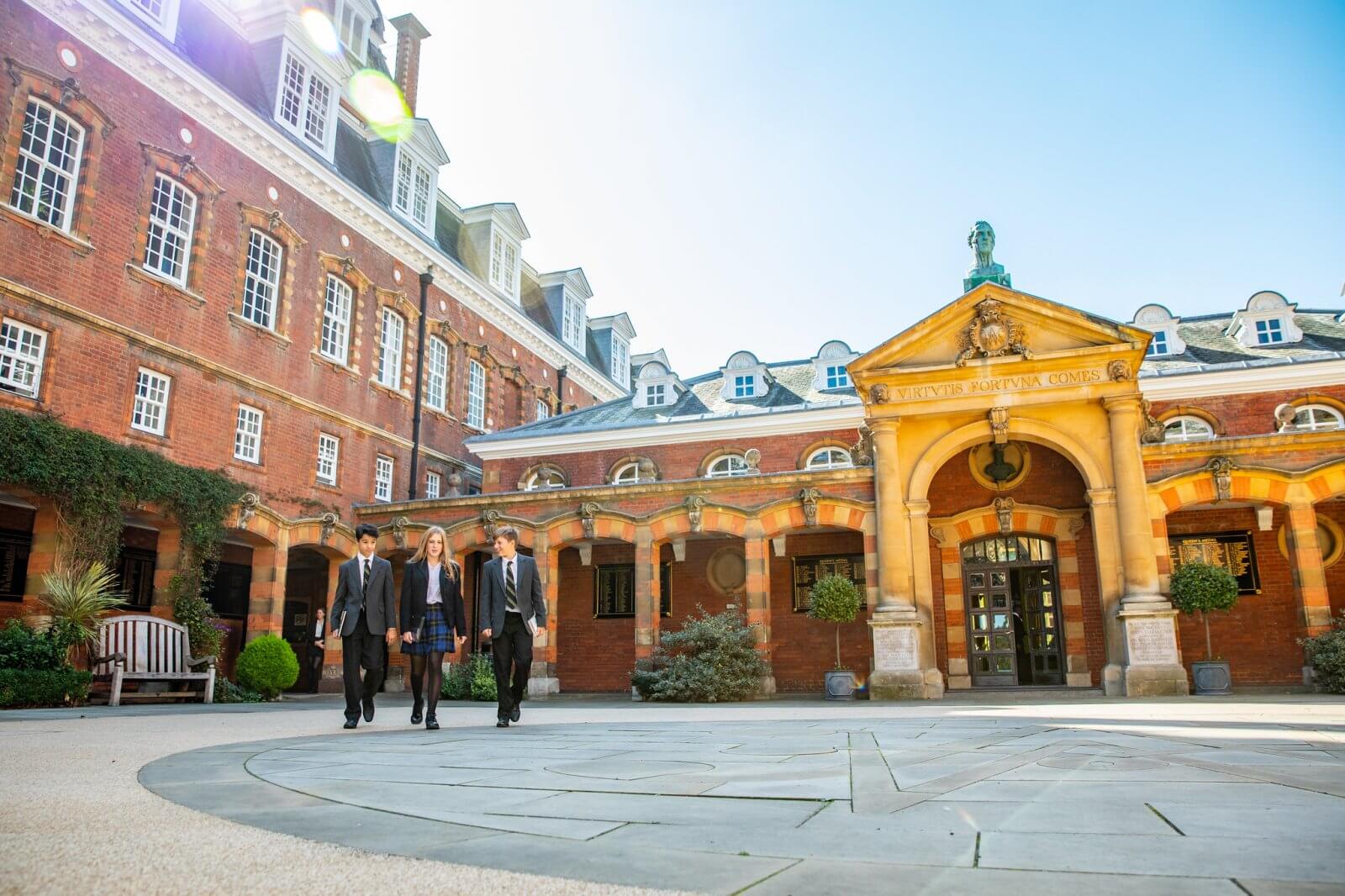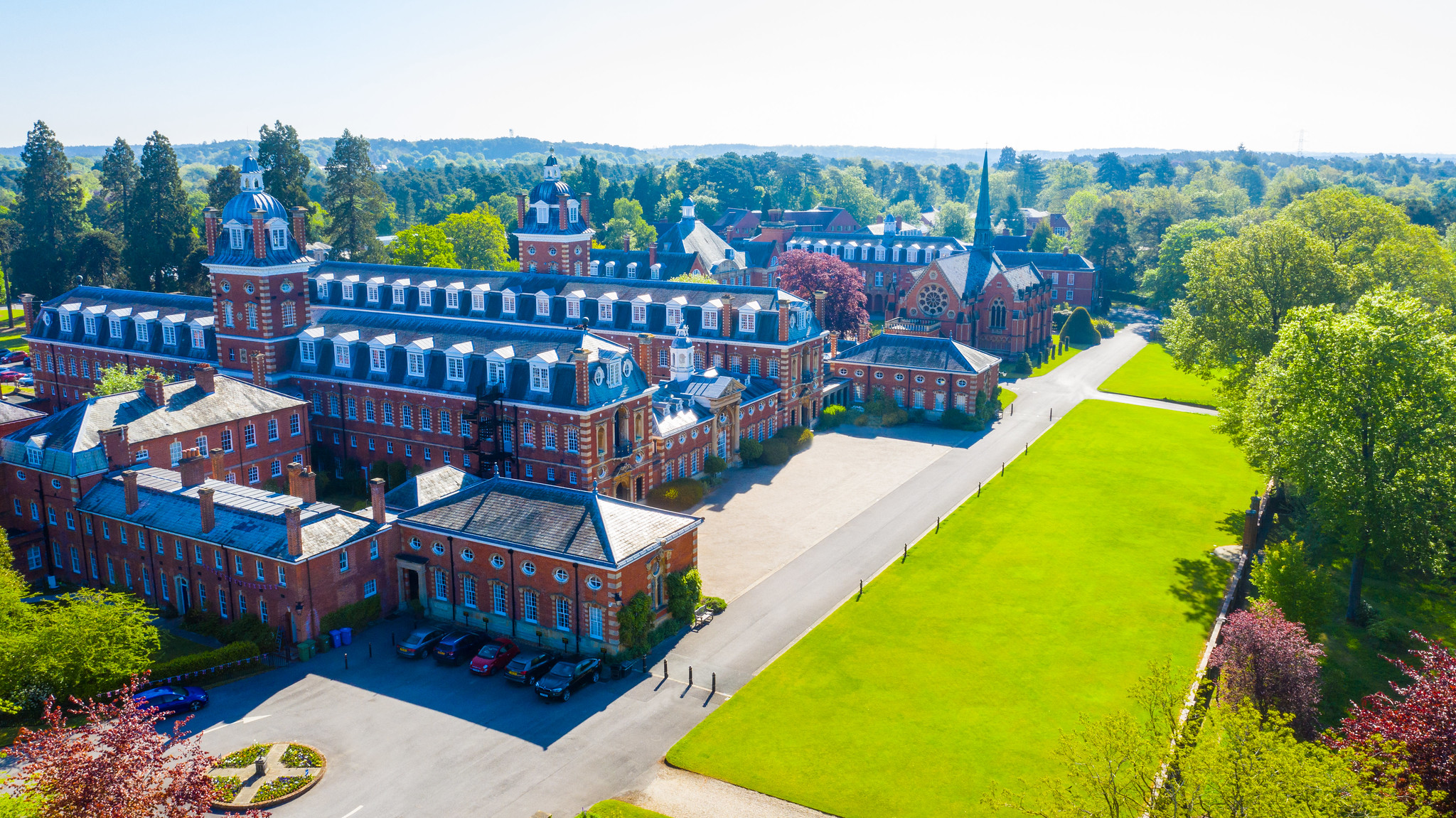They agreed that a charitable educational institution should be set up both as a monument to the Iron Duke and also as a living institution to educate the orphan sons of army officers – the original ‘Foundationers’.
Wellington College was granted its Royal Charter in December 1853 as the ‘Royal and Religious Foundation of The Wellington College’. The College was designed by John Shaw Jr (1803-1870) with Queen Victoria laying the foundation stone in 1856.
The first 76 boys, aged between eleven and fifteen, arrived on 20th January 1859: 47 were Foundationers paying fees of between £10 and £20 a year; the remaining 29 were sons of serving officers and civilians paying fees of between £70 and £100 a year. A week after the boys arrived, Queen Victoria performed the official opening ceremony.
In 1952 a Supplementary Royal Charter extended the privilege of eligibility to the orphan children of deceased officers of the Royal Navy, Royal Marines and Royal Air Force. In 2006 a further change widened the scope of the Foundation yet further.
The College’s curriculum has always aimed to fit students for all walks of life, but its military tradition was strong for many years. Because of this, a total of over 1200 Old Wellingtonians were killed in the two World Wars. The concept of service, still central at Wellington, is now understood in a much wider context.
Wellington has remained on its beautiful and extensive site in Berkshire since its foundation. Girls were admitted to the Sixth Form in 1975, and the school became fully co-educational in 2006. The College is now home to 1100 pupils, 80% of whom board and some of whom are still Foundationers.









